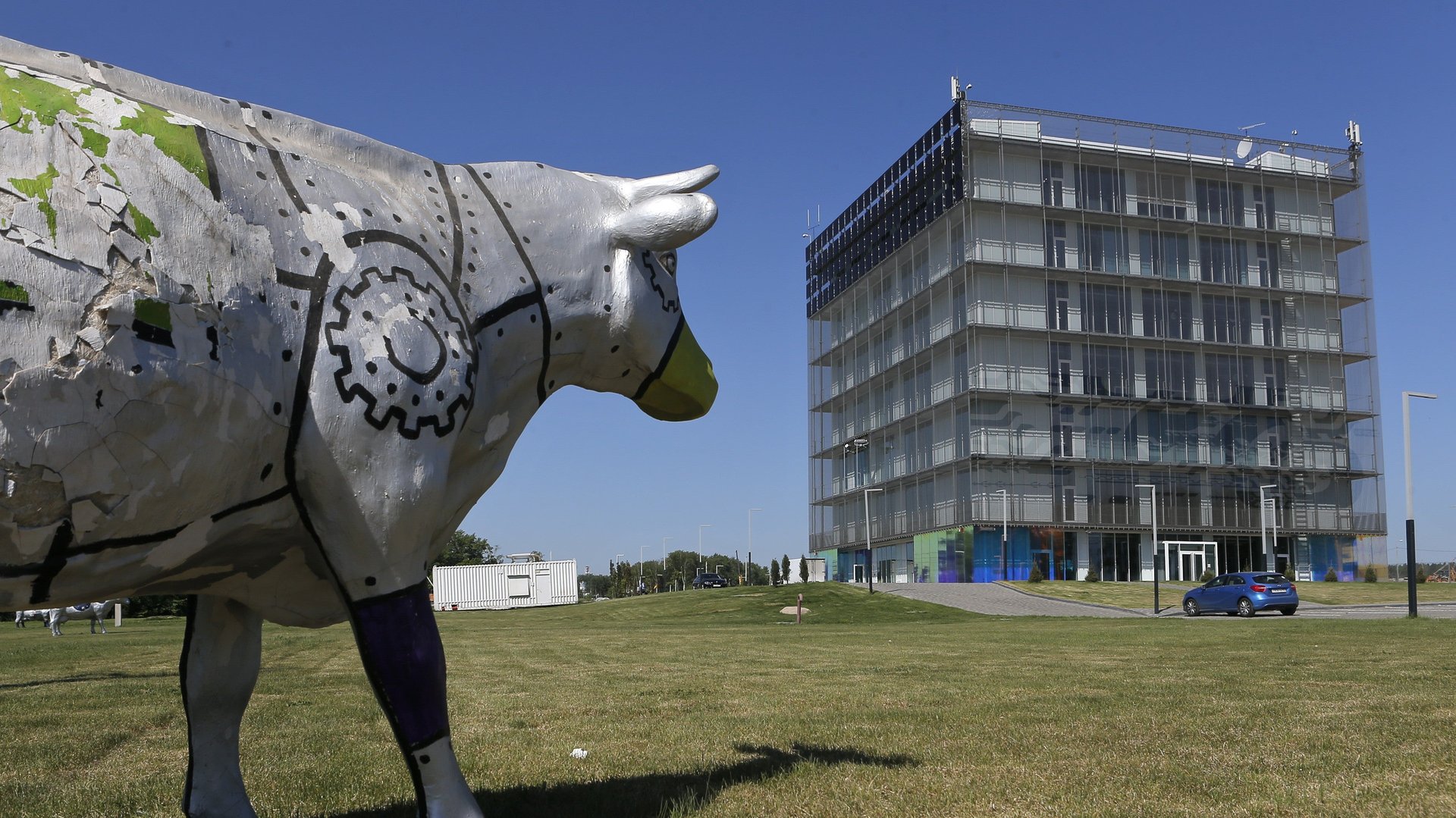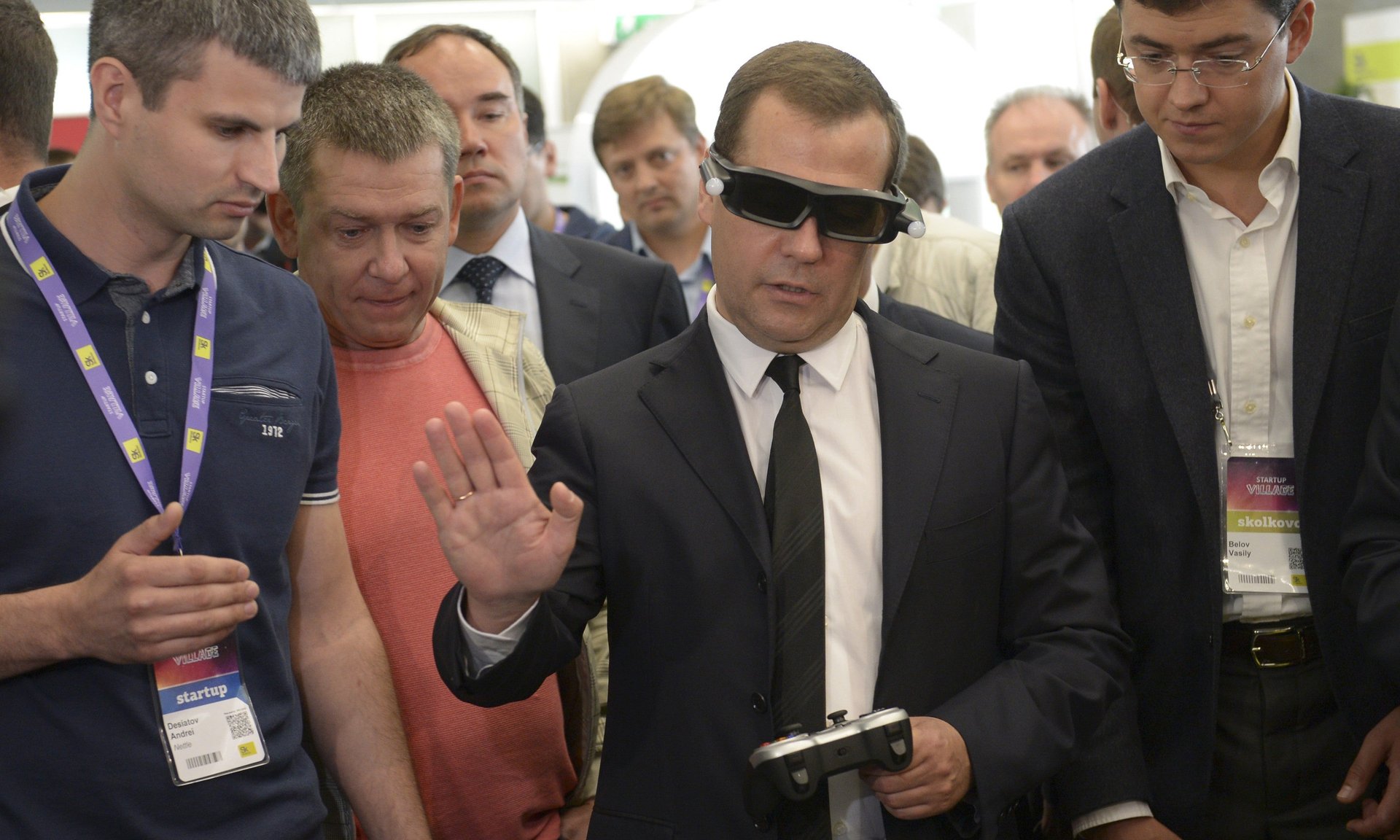What crisis? Moscow’s ridiculously ambitious plan to build the next Silicon Valley
Moscow, Russia


Moscow, Russia
We’d traveled nearly an hour from our hotel in central Moscow before turning off the highway, down a side street, and onto a gravel road headed toward what appeared to be the middle of nowhere. The minibus, crowded with foreign journalists, crawled up a small hill. There, all by itself at the edge of vast green field, stood a small wooden shack. “Startup Village” was written on its side.
The shack marked the edge of Skolkovo, a sprawling tech city rising on the outskirts of the Russian capital, and the visitors might have been forgiven for mentally replacing the first word with “Potemkin.”
In an effort to create jobs, spark recovery and diversify beyond petroleum, Moscow is doubling down on technology, tossing up IT hubs as if innovators and entrepreneurs were as common here as snowflakes. City officials aim to have 40 “technoparks” by the end of this year, including those already in operation, and 60 by the end of 2018. These hubs are expected to cover 670 hectares (1,660 acres), house 5,300 people, and provide 40,000 jobs. But they could also end up as empty shells.
The ruble has been flirting with all-time lows, oil prices have dipped below $30 a barrel, and in January the Russian government slashed its budget for 2016 by 10%. In 2015, foreign investment in Russia fell 92% (pdf, p. 6) from the previous year, GDP contracted by nearly 4%, and real incomes declined for the first time in a decade.
By the middle of last year Moscow had more than one million square meters (paywall), or 10.7 million sq ft, of available industrial and warehousing space and nearly three million square meters of empty office space—both record totals. Moscow City, a gleaming new financial quarter that’s home to Europe’s three tallest buildings, is largely vacant (paywall).
“We are not feeling the pressure of sanctions”
None of this seems to deter Sergey Cheremin, the head of Moscow’s Department for Foreign Economic and International Relations. “Frankly, we are doing just fine. We are not feeling the pressure of sanctions,” he told dozens of foreign journalists on a crisp morning last December in the World Trade Center, next to Moscow City. “We have a goal to turn Moscow into a modern-day technological center.”
Cheremin was speaking at the opening of the “It’s Time for Moscow!” conference, a slick affair organized by the city and media giant RBC, owned by the billionaire Mikhail Prokhorov. The event, designed to showcase Moscow’s potential as a tech hub to the foreign media, included a tour of the city’s top tech hubs.
We were brought first to Technopolis, a 350,000-sq-meter office and industrial space housed in a former Moskvich car factory southeast of the city center. Opened in 2012, it’s focused on robotics, automation, and manufacturing; it houses a hackerspace, event center, and nearly 50 tenant companies. Later this year it will add a hotel.
Technopolis is backed by the city, which has invested about 18 billion rubles (currently around $240 million), and offers tenants a reduced tax rate (15.5% vs the usual 20%). Several foreign firms have partnered with Technopolis, including Crocus Technology, a US and France-based semiconductor company. It’s backing Crocus Nano Electronics, a well-funded joint venture with Rusnano, a state-owned nanotechnology firm.
Another star tenant is Modula, a partnership with the Hungarian automotive engineering firm evopro. It’s developing a bus that runs on compressed natural gas and is made of advanced composite materials, making it light but strong. After a short ride on an electric trolley to a vast, dusty industrial space, we were shown several bus frames in various states of creation. The finished product is expected to hit Moscow streets for a pilot run this spring.
The Technopolis offices are clean and modern, and the industrial spaces well outfitted. But they were half-empty, and the labs looked little-used.
“Speed is of particular importance”
Skolkovo was next. After driving past the “Startup Village” shack we parked outside the Skolkovo Innovation Center, strolled into a high-ceilinged hall, and plopped down on avocado-green beanbag chairs for a slideshow. Bright graphics, photos of smiling faces, and smart architectural renderings accompanied a parade of impressive statistics. “Skolkovo is about building an innovation ecosystem,” said a confident young official.
When completed, in 2018, it will offer nearly half a million square meters of industrial and tech space, as well as schools, a hospital, transport hub, conference hall, apartment blocks, and entertainment, shopping, and dining districts. Officials say it will create 45,000 jobs and house 20,000 people. Skoltech University, a partnership with MIT, promises to have an enviable faculty-to-student ratio, with 1,200 students and 200 professors (pdf, p.2).

“Speed is of particular importance,” then-president Dmitry Medvedev said in 2010, announcing the $4 billion plan for his brainchild. Skolkovo received close to $1 billion in backing from Western partners.
But in 2013, anti-corruption agents raided the facility and two executives were charged with embezzlement. The project’s budget for 2014 was slashed by some 30%, reportedly on the orders of Vladimir Putin—now president again—who is less enamored of technology than Medvedev, an Apple fan and active Tweeter. Putin later vetoed a law that exempted Skolkovo from obtaining state planning permits. Edward Crawley, appointed as the head of Skoltech, stepped down to return to MIT just months after the institution graduated its first class (of 80 students). Last May, one Western news outlet went so far as to pronounce Skolkovo dead.
Yet the next month a Skolkovo startup event sparked more than $270 million worth of investment deals on its first day, including an R&D commitment from Panasonic. Tools created by the Skolkovo startups Data Advance and Rock Flow Dynamics have been used by the likes of Airbus, Michelin, Mitsubishi, Gazprom, Halliburton and PetroChina, say Skolkovo officials.
The tech hub’s partners include a who’s who of heavy hitters: Siemens, Intel, Microsoft, Honeywell, Cisco, Boeing, and more. Some 2,500 people work there, and though nobody lives there, officials said they expect people to begin moving in this spring. On the day we visited, construction workers were ubiquitous. Skolkovo residents will enjoy massive tax breaks, access to grants and seed capital, and exemptions from certain immigration restrictions.
“Why’d they take us to a gulag?”
The third stop on our tech tour, Zelenograd, was a reminder that tech parks are nothing new in Russia. In 1957, the Soviet government founded Akademgorodok, a vast collection of scientific research centers outside Novosibirsk, in Siberia. The next year it created Zelenograd, 40 kilometers outside Moscow, which ultimately focused on electronics. Both thrived for many years—Akademgorodok was home to 60,000 people for decades—but fell into disrepair after the collapse of the Soviet Union.
Today, Zelenograd is active, if a bit down-at-heel (“Why’d they take us to a gulag?” one visiting reporter joked after the tour) and Akademgorodok is undergoing something of a revival as a new IT-focused business hub with some 300 companies and 9,000 employees. a progressive country eons away from the one in which Putin thumbs his nose at the West, and at the global economy more broadly.
Just a couple of years ago things looked a lot more rosy. In 2013, White Board magazine ranked Moscow the world’s 14th best tech market, ahead of Berlin, and Wired highlighted several hot Moscow startups. Venture funding in Russia increased 60% in 2014, to $668 million—not too shabby compared to the $1.4 billion (paywall) in London that year.
But that money was mainly thanks to state-backed funds like the Skolkovo Foundation. The tech market faltered in late 2014, and all but collapsed in 2015. In December, the tech- and entrepreneur-focused media site Rusbase published a post-mortem on 200 dead Russian startups.
Economic crises and political repression have driven out thousands of the best engineers, scientists, mathematicians, economists, and intellectuals. Online groups with names like “Time to Go?” have appeared, offering advice to Russians looking to emigrate. In 2014, the number of Russians leaving topped 53,000, the highest in nine years. Some promising tech startups have left too.
The economic crisis has squeezed access to funding, particularly for startups. And since the advent of Western sanctions in mid-2014, Russian scientists and developers have had trouble importing materials that could potentially be used for military or defense purposes, curbing innovation and research.
Besides its economic troubles, Russia isn’t a naturally nurturing place for entrepreneurship. Maria Podlesnova, the CEO of Rusbase, listed the reasons during a recent interview at her office. Russians, she said, are relatively new to capitalism, so their capacity to run a business is limited; most professionals are unwilling to fail, which curbs experimentation; and thanks to vast corruption, many Russians see entrepreneurs and businesspeople as crooks.
The state can also be highly unfriendly. In mid-February the Moscow government bulldozed about 100 small businesses across the city overnight. More than 200,000 Russian businesspeople faced criminal charges in 2014, and 83% lost their businesses. The lack of legal guarantees undermines innovation and entrepreneurship. Many bright young folks never consider starting a business or sharing their ideas.
“Only 2-3% of Russians, maybe 4%, understand that tech and entrepreneurship is very important and we have to move in this direction,” said Podlesnova. “The rest still live in the USSR, where entrepreneur is a very bad word.”
Still, Moscow has a lot going for it. It’s served by five airports and a good metro system, and has a recent history of tech success. No city has more billionaires. By 2020, the population of greater Moscow could approach 20 million. Russians have long excelled at scientific tinkering, and chances are good that increasing numbers of Muscovites will move into tech as the economy lurches into the 21st century.
The city’s first 21st century technopark, Strogino, opened in 2007. Today there are 17—from Technopolis and Skolkovo to Temp, which produces touchscreens and interactive systems. But a visitor might wonder how many of the 60 planned parks will turn into little Potemkin villages.